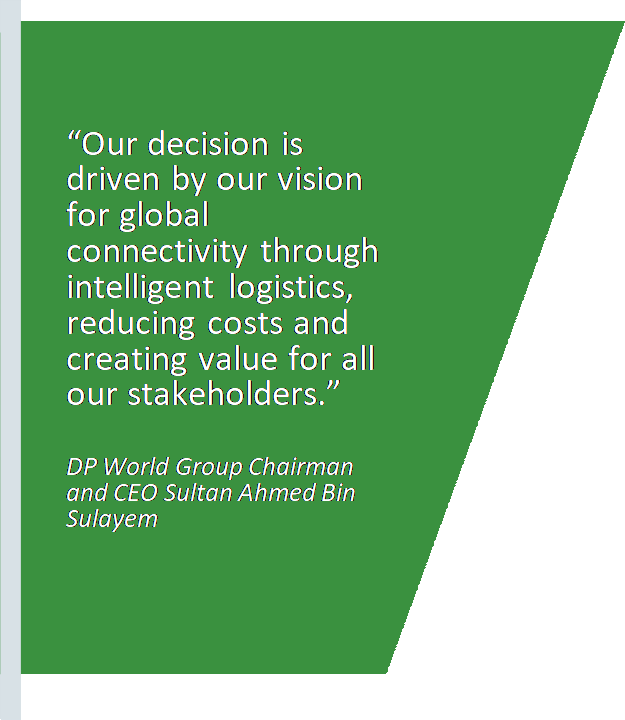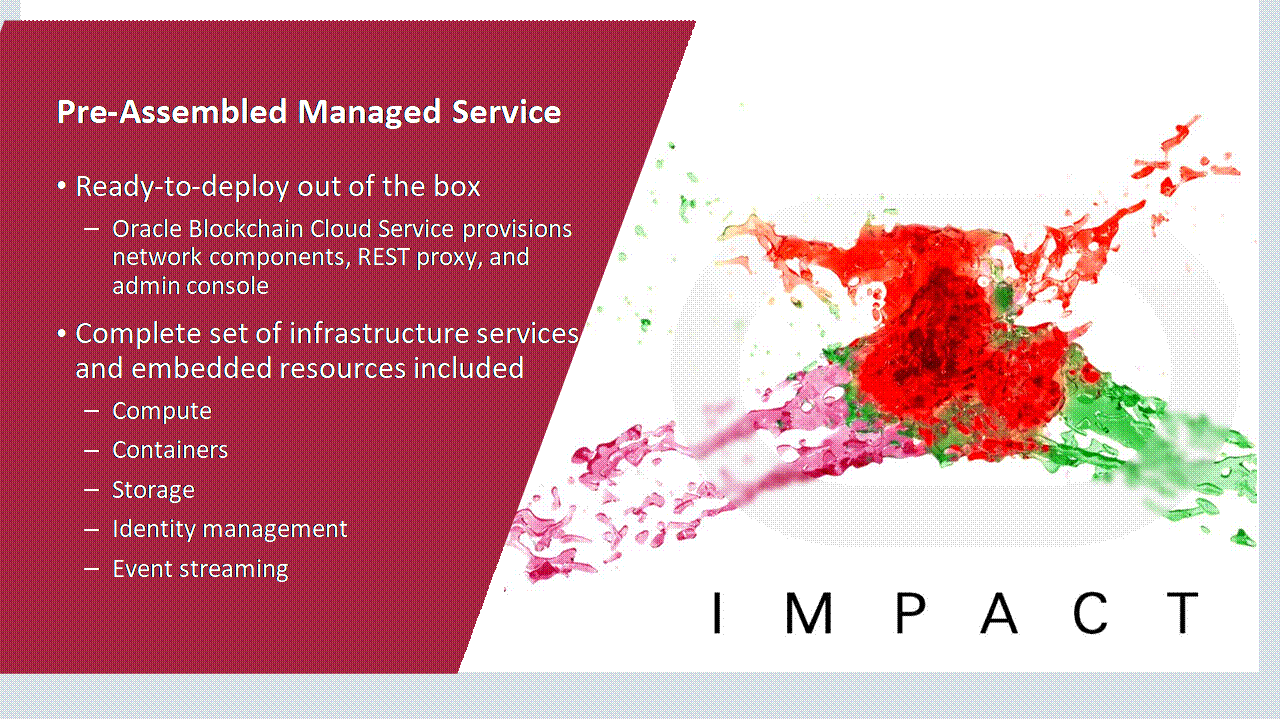What Is Blockchain?



blockchain is an incorruptible digital ledger of
economic
blockchain is an incorruptible digital ledger of
economic
transactions that can
be
programmed
to record not just
financial
transactions ckchain Revolution



 The
Way Business is Done
The
Way Business is Done
 Lack
of real-time information visibility within a trading ecosystem
Lack
of real-time information visibility within a trading ecosystem
 Typical
Drivers for exchange
across enterprise Error-prone information
Typical
Drivers for exchange
across enterprise Error-prone information
Blockchain
at the boundaries

 Enterprise Delays due to
offline
Enterprise Delays due to
offline
reconciliations
 Lack
of trust in peer-to-peer
Lack
of trust in peer-to-peer
B2B transactions
 High
risk & cost of fraud in cross-company transactions
High
risk & cost of fraud in cross-company transactions
Key Features of Blockchain
 Tamper-proof,
Decentralized non-refutable records
Tamper-proof,
Decentralized non-refutable records
|
 All
parties maintain encrypted records of transactions All
parties maintain encrypted records of transactions
Altering would require overriding the
entire distributed network
|
Data stored across network rather than
centrally
Better security and availability: No
centralized point of
|
vulnerability 
 Interoperable
through standards
Interoperable
through standards
 Hyperledger
Fabric: industry-standard foundation for developing blockchain applications and
solutions
Hyperledger
Fabric: industry-standard foundation for developing blockchain applications and
solutions
Developed
by the Linux Foundation and industry leaders across verticals

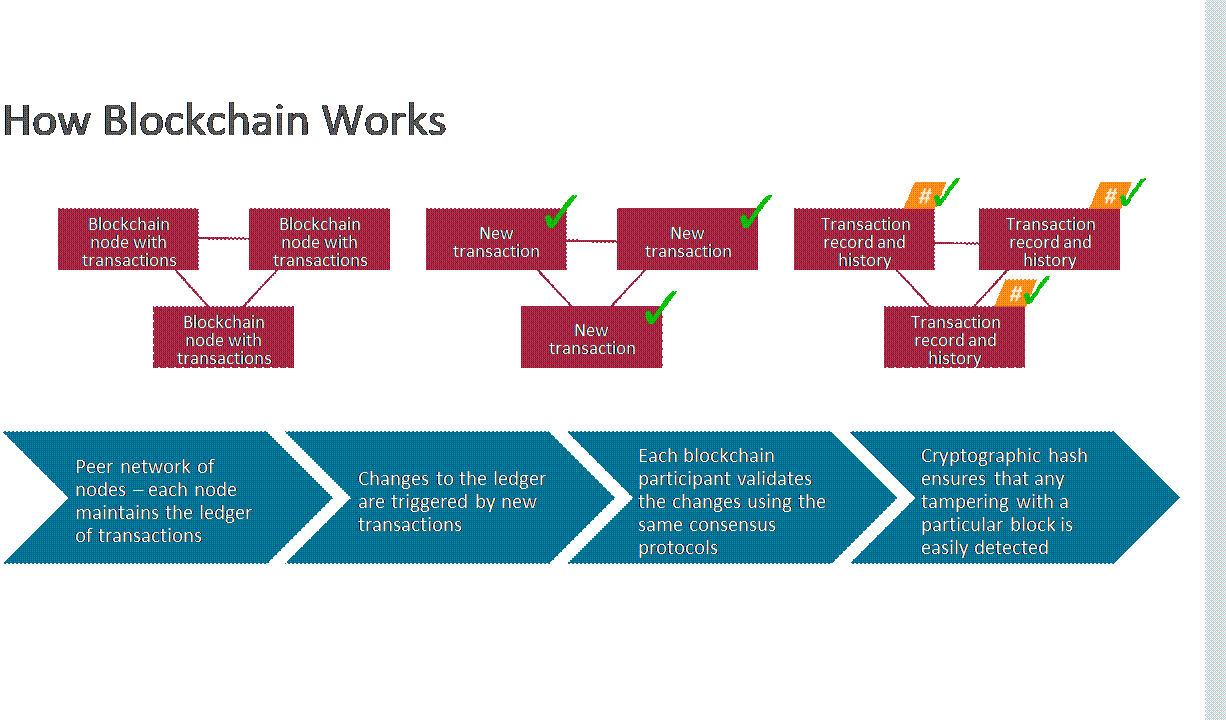

 Example:
Typical International Supply Chain
Example:
Typical International Supply Chain

Lack of transparency: retailer
must rely on wholesaler for sourcing and authenticity information
Slower processes: delays
or problems in one part of supply chain may not be communicated, resulting in
delays being amplified through the supply chain
Increased costs: Due
to errors, delays, and miscommunication



 Different
Types of Blockchains
Different
Types of Blockchains
|
|
Enterprise-Focused →
Increased Ownership & Control
→
|
|
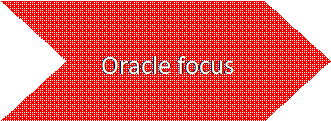
|
← Increased Anonymity of Participants / Validators
|
|
Public
|
Federated
Caretaker consortium
|
Private
|
|
Approval to Connect
↑
Trust in
Participants /
Validators
↓
Anyone can Connect
|
Permissioned
|
Example: Controlled by a Ministry of
Health for patient record management and exchange
|
Example: Controlled by a consortium of
banks for interbank payments
|
Example: Controlled by a Ministry of
Health for patient record management and exchange
|
|
Permissionless
|
Example: Most Crypto currencies,
Prediction
markets, Authenticity tracking of goods
|
Example: Controlled by several companies for
consumers to
exchange their
loyalty
points
|
|
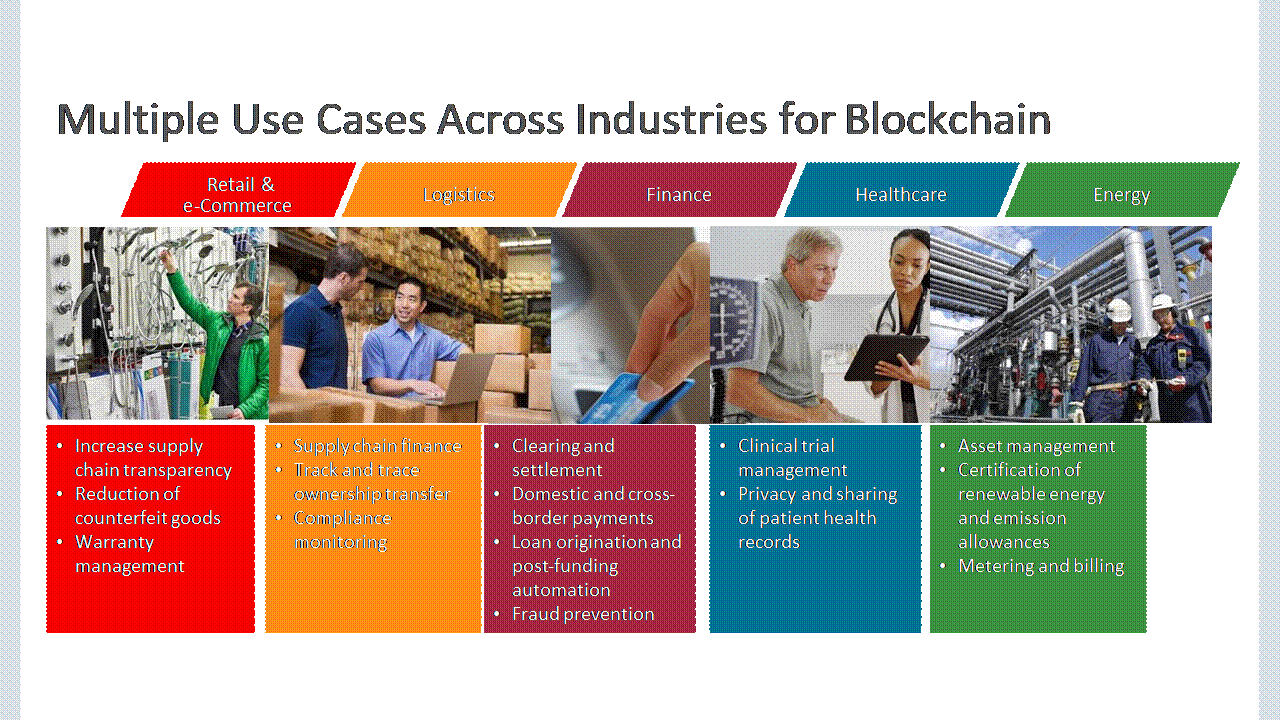

![]()
![]()
blockchain is an incorruptible digital ledger of
economic
blockchain is an incorruptible digital ledger of
economic ![]()

![]()
 The
Way Business is Done
The
Way Business is Done Lack
of real-time information visibility within a trading ecosystem
Lack
of real-time information visibility within a trading ecosystem Typical
Drivers for exchange
across enterprise Error-prone information
Typical
Drivers for exchange
across enterprise Error-prone information 
![]() Enterprise Delays due to
offline
Enterprise Delays due to
offline  Lack
of trust in peer-to-peer
Lack
of trust in peer-to-peer  High
risk & cost of fraud in cross-company transactions
High
risk & cost of fraud in cross-company transactions 







